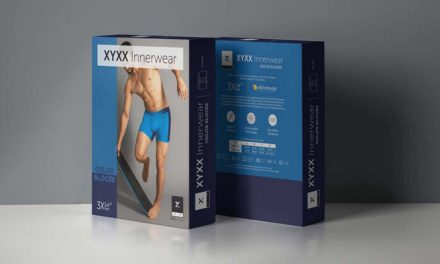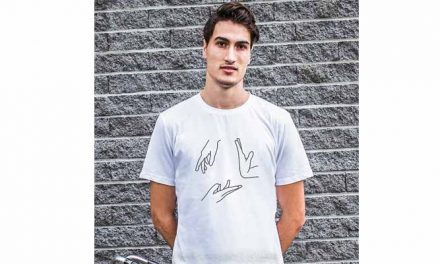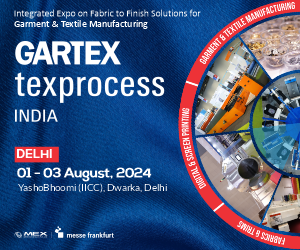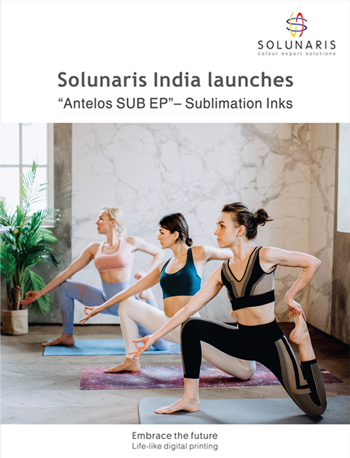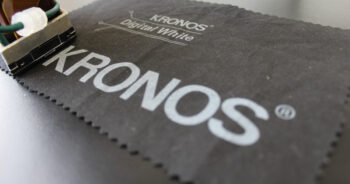 Polymer materials manufacturer Covestro and Kronos, a manufacturer of titanium dioxide pigments, have presented a series of breakthroughs demonstrating how the uptake of digital inkjet printing can provide sustainability benefits for the textile industry. With further validation by other industry partners, testing has demonstrated that Covestro’s waterborne Insqin portfolio of Impranil polyurethane (PU) binders and Imprafix cross-linkers is compatible with the white pigment dispersion Kronos 9900 Digital White. These latest results show that no significant sedimentation was observed, and all formulations showed good stability after four weeks of testing at 50°C.
Polymer materials manufacturer Covestro and Kronos, a manufacturer of titanium dioxide pigments, have presented a series of breakthroughs demonstrating how the uptake of digital inkjet printing can provide sustainability benefits for the textile industry. With further validation by other industry partners, testing has demonstrated that Covestro’s waterborne Insqin portfolio of Impranil polyurethane (PU) binders and Imprafix cross-linkers is compatible with the white pigment dispersion Kronos 9900 Digital White. These latest results show that no significant sedimentation was observed, and all formulations showed good stability after four weeks of testing at 50°C.
According to Covestro, switching from analogue printing to digital printing using pigment inks is said to enable an 85% reduction in waste materials, a 55% lowering of energy consumption, a 60% reduction in water consumption, and a 95% decrease in CO2 emissions. The company’s Insqin range uses waterborne PU technology instead of potentially polluting solvents and is part of Covestro’s drive to replace PU-based textile coatings and artificial leather with a more sustainable option. It was developed with a particular focus on achieving the performance, especially the softness, of solvent-based materials and can be adapted to multiple applications, including garments, bags, footwear and furniture.
Covestro also claims Insqin Base reduces manufacturing costs, and can be embossed directly after production, therefore removing the need for use of release paper to bring in material effects. As such, the compatibility of the four Covestro binders – Impranil DL 1602, Impranil DL 1618, Impranil DL 1620, and Impranil DL 1623, with Kronos 9900 Digital White is described by the company as an “exciting development, opening the door to increased uptake of inkjet fabric printing”.
Torsten Pohl, head of global textile coatings, Covestro explained: “By joining forces with another raw materials supplier, we can address two key pigment ink challenges facing the growing digital inkjet printing market: formulation and sagging. Working together with Kronos brings us another step closer to a more sustainable textile industry.”
Covestro has also developed a new polyurethane dispersion, Impranil DL 1606, specifically to address the particular problem of sagging – a well-known quality issue resulting from the relatively high ink loads needed for direct-to-foil (DTF) printing.
Moreover, the binder enables high white ink loads which, says Covestro, makes it an appropriate choice for white pigment inks used in inkjet printing. Its performance in compatibility, stability, printability and image quality has also been validated by Covestro’s partners.
Jürgen Bender, global market development manager, added: “Thanks to this collaboration, we’ve ensured that our innovative Kronos 9900 Digital White aqueous pigment concentrate is compatible with Covestro’s Insqin polyurethane binders – ideal for direct-to-foil textile printing.
“Moreover, the new Kronos development addresses the need in inkjet applications for highest stability in bottle, drum, printhead, in-flight and on-substrate. Together, we’ve cleared a barrier to the uptake of more sustainable digital printing technologies.”
 Polymer materials manufacturer Covestro and Kronos, a manufacturer of titanium dioxide pigments, have presented a series of breakthroughs demonstrating how the uptake of digital inkjet printing can provide sustainability benefits for the textile industry. With further validation by other industry partners, testing has demonstrated that Covestro’s waterborne Insqin portfolio of Impranil polyurethane (PU) binders and Imprafix cross-linkers is compatible with the white pigment dispersion Kronos 9900 Digital White. These latest results show that no significant sedimentation was observed, and all formulations showed good stability after four weeks of testing at 50°C.
Polymer materials manufacturer Covestro and Kronos, a manufacturer of titanium dioxide pigments, have presented a series of breakthroughs demonstrating how the uptake of digital inkjet printing can provide sustainability benefits for the textile industry. With further validation by other industry partners, testing has demonstrated that Covestro’s waterborne Insqin portfolio of Impranil polyurethane (PU) binders and Imprafix cross-linkers is compatible with the white pigment dispersion Kronos 9900 Digital White. These latest results show that no significant sedimentation was observed, and all formulations showed good stability after four weeks of testing at 50°C.

